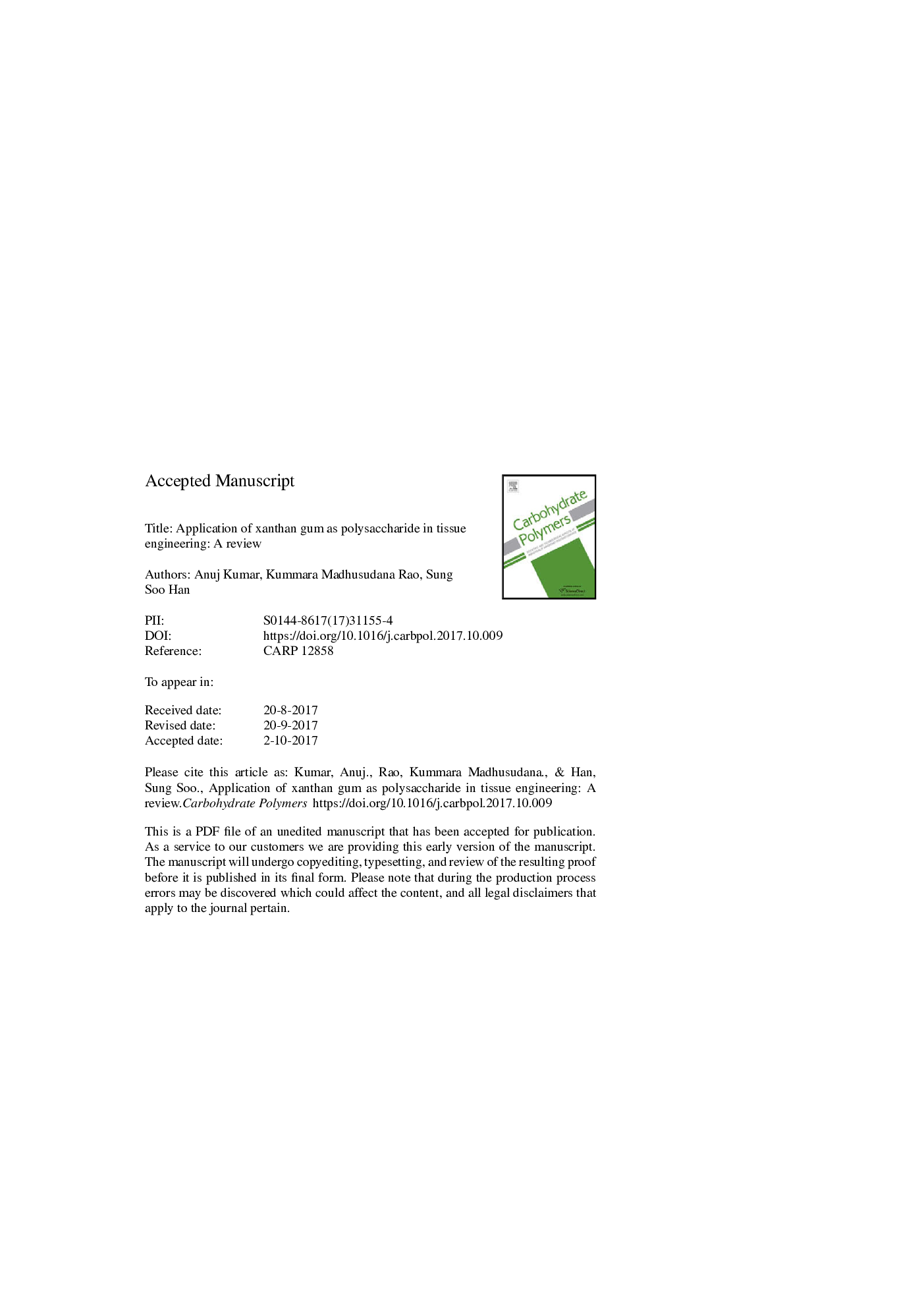| Article ID | Journal | Published Year | Pages | File Type |
|---|---|---|---|---|
| 5156365 | Carbohydrate Polymers | 2018 | 70 Pages |
Abstract
Xanthan gum is a microbial high molecular weight exo-polysaccharide produced by Xanthomonas bacteria (a Gram-negative bacteria genus that exhibits several different species) and it has widely been used as an additive in various industrial and biomedical applications such as food and food packaging, cosmetics, water-based paints, toiletries, petroleum, oil-recovery, construction and building materials, and drug delivery. Recently, it has shown great potential in issue engineering applications and a variety of modification methods have been employed to modify xanthan gum as polysaccharide for this purpose. However, xanthan gum-based biomaterials need further modification for several targeted applications due to some disadvantages (e.g., processing and mechanical performance of xanthan gum), where modified xanthan gum will be well suited for tissue engineering products. In this review, the current scenario of the use of xanthan gum for various tissue engineering applications, including its origin, structure, properties, modification, and processing for the preparation of the hydrogels and/or the scaffolds is precisely reviewed.
Keywords
Related Topics
Physical Sciences and Engineering
Chemistry
Organic Chemistry
Authors
Anuj Kumar, Kummara Madhusudana Rao, Sung Soo Han,
